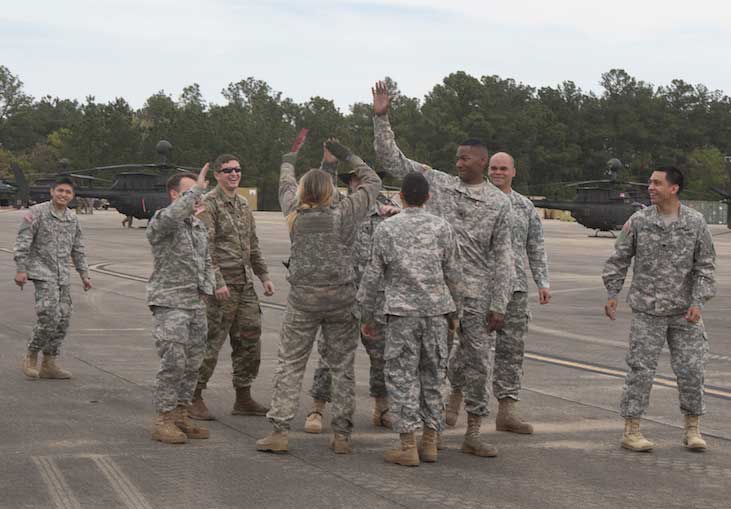Suicide is the leading cause of death among Service Members
Many military organizations and researchers are actively trying to answer “why?” suicide is so widespread among Service Members. Although suicide doesn’t have a single cause, one reported reason for Service Member suicide is a lack of close relationships. 30% of Service Members’ suicide notes and medical records communicated they didn’t feel a sense of “belongingness.”
Belongingness is feeling your relationships with others are meaningful. At work, this means feeling connected to and accepted by your teammates.
If you have thoughts of suicide, please call the Military Crisis Line: Dial 988, then press 1.
Not feeling a sense of belongingness is connected to many health outcomes. Service Members who don’t feel like they belong are more likely to experience insomnia and PTSD symptoms. They’re also at greater risk of experiencing depression after deployment.
Since human connection can improve health (and save lives), how can you create a team who feels like they belong? These are HPRC’s recommendations to increase feelings of belongingness:
- Express gratitude. Expressing gratitude to teammates or loved ones can make them feel loved, supported, and valued. It can also increase life satisfaction and boost resilience. For gratitude resources, see HPRC’s tips for ways to grow your gratitude and participate in the #GotMySix gratitude campaign.
- Eat a meal together. Eating together positively impacts healthy eating habits and provides opportunities to get to know your teammates. Additionally, eating together improves group performance and cooperation among teammates.
- Foster a supportive work environment. Social support is important for team cohesion and close team relationships. Supportive work environments can positively impact feelings of belongingness. The more supportive you are of your peers, the stronger your team can be.
- Emphasize quality of life. Work responsibilities can be demanding and spillover into personal lives, so it’s important to balance life interests and relationships. Individuals with secure relationships have strong emotional connections with others, and group workouts can boost teamwork and friendship. For additional resources, view HPRC’s suggestions for balancing work and life.
- Encourage help-seeking behaviors. Unfortunately, there is still a stigma of Service Members seeking help for their mental health. But getting help is a sign of strength and commitment to the team. Encourage yourself or your teammates to seek treatment or counseling if they feel lonely, like they don’t belong, or have thoughts of suicide.
- Use safe messaging. As a leader, you have a lot of influence over your team. Learn about and use safe messaging when discussing suicide-related topics. It can reduce the risk of suicide. Safe messaging includes telling stories of resilience, offering resources, and avoiding sensational language.
For additional suicide-prevention resources, view HPRC’s list of resources to help yourself or someone else.
